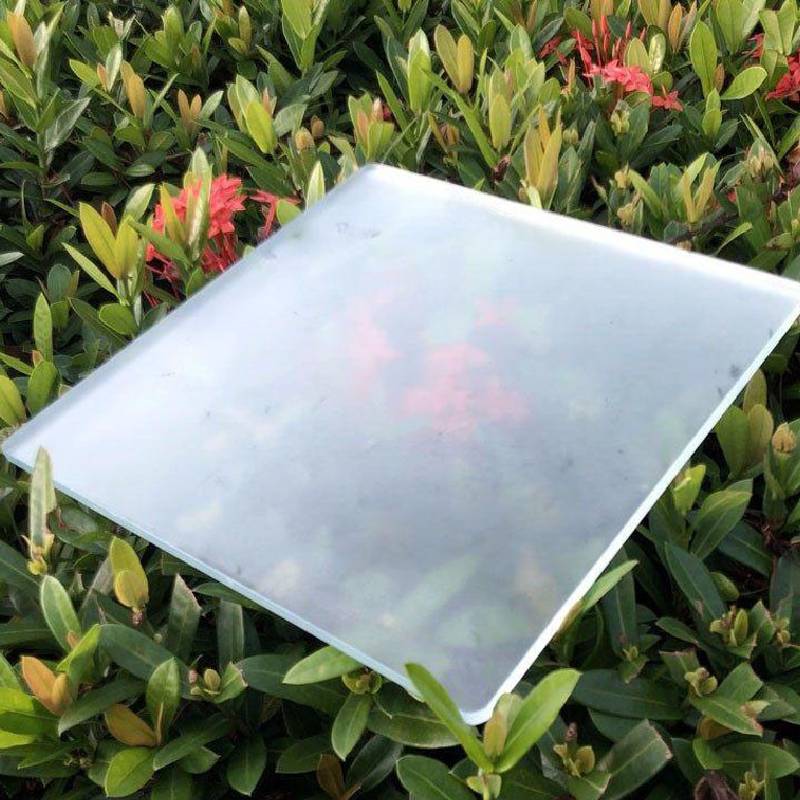The Rise of Green Float Glass A Sustainable Solution for Modern Architecture
In recent years, sustainability has become a central theme in various industries, including architecture and construction. One innovative material that has gained popularity due to its eco-friendly properties is green float glass. This specialized type of glass not only meets aesthetic and functional requirements but also aligns with the growing demand for sustainable building materials.
What is Green Float Glass?
Green float glass is a type of flat glass that is produced through the float glass process, which involves melting raw materials such as silica sand, soda ash, and limestone. The molten glass is then poured onto a bed of molten tin, where it spreads out and forms a smooth, even surface. The term green refers to the slight green tint that the glass acquires during manufacturing, primarily due to iron impurities in the raw materials used.
This green tint is not merely cosmetic; it serves as an indicator of the glass's eco-friendly characteristics. Unlike standard clear glass, which often requires energy-intensive coatings and treatments to achieve desired performance levels, green float glass can offer natural solar control and thermal insulation. This makes it particularly appealing for commercial and residential buildings.
Environmental Benefits of Green Float Glass
One of the most significant advantages of green float glass is its environmental impact. The production of this glass involves less energy consumption compared to other types of glass, leading to lower carbon emissions. Additionally, because it is recyclable, it contributes to a circular economy. When buildings are deconstructed or a window is replaced, green float glass can be reused in the manufacturing of new glass products, reducing waste in landfills.
Moreover, the use of green float glass can enhance energy efficiency in buildings
. Its natural tint helps filter harmful UV rays while allowing ample natural light to enter spaces. This capability not only reduces the need for artificial lighting but also minimizes the reliance on heating and cooling systems, thereby lowering energy bills and the carbon footprint of a building.
Aesthetic Appeal
green float glass
The visual qualities of green float glass also contribute to its popularity in architecture. Its subtle green hue can complement various design styles, from contemporary to traditional. Architects and designers are increasingly leaning towards the use of green float glass in facades, windows, and interior applications because it can create a sophisticated look while still adhering to sustainability principles.
Moreover, green float glass can be treated with various coatings or films to enhance its performance without sacrificing aesthetics. Whether it’s low-emissivity coatings for improved insulation or reflective coatings to reduce solar heat gain, the versatility of green float glass provides numerous options for custom design solutions.
Applications in Architecture
The applications of green float glass in architecture are diverse. It can be used in residential homes, commercial buildings, and even in skyscrapers. For example, incorporating large expanses of green float glass in window designs allows for expansive views while promoting natural light flow. In retail environments, it creates inviting displays that attract customers without significant energy costs.
Additionally, green float glass is a preferred choice for green buildings aiming for certifications like LEED (Leadership in Energy and Environmental Design). Its properties contribute to meeting sustainable building criteria, which is increasingly important to clients and developers who prioritize environmental responsibility.
Conclusion
In summary, green float glass is leading the way in sustainable architecture. Its unique combination of aesthetic appeal, energy efficiency, and recyclability makes it an attractive option for modern building projects. As the industry continues to evolve, materials like green float glass will play a crucial role in reducing the environmental impact of construction and creating spaces that are not only beautiful but also eco-friendly.
With increasing awareness of environmental issues and a greater emphasis on sustainable building practices, the future of green float glass looks promising. Architects, builders, and developers are likely to continue embracing this innovative material, paving the way for a stronger commitment to sustainability in the built environment. As we move towards a greener future, materials like green float glass will be at the forefront of this transformation, proving that we can achieve both elegance and environmental responsibility in our architectural endeavors.
 Afrikaans
Afrikaans  Albanian
Albanian  Amharic
Amharic  Arabic
Arabic  Armenian
Armenian  Azerbaijani
Azerbaijani  Basque
Basque  Belarusian
Belarusian  Bengali
Bengali  Bosnian
Bosnian  Bulgarian
Bulgarian  Catalan
Catalan  Cebuano
Cebuano  Corsican
Corsican  Croatian
Croatian  Czech
Czech  Danish
Danish  Dutch
Dutch  English
English  Esperanto
Esperanto  Estonian
Estonian  Finnish
Finnish  French
French  Frisian
Frisian  Galician
Galician  Georgian
Georgian  German
German  Greek
Greek  Gujarati
Gujarati  Haitian Creole
Haitian Creole  hausa
hausa  hawaiian
hawaiian  Hebrew
Hebrew  Hindi
Hindi  Miao
Miao  Hungarian
Hungarian  Icelandic
Icelandic  igbo
igbo  Indonesian
Indonesian  irish
irish  Italian
Italian  Japanese
Japanese  Javanese
Javanese  Kannada
Kannada  kazakh
kazakh  Khmer
Khmer  Rwandese
Rwandese  Korean
Korean  Kurdish
Kurdish  Kyrgyz
Kyrgyz  Lao
Lao  Latin
Latin  Latvian
Latvian  Lithuanian
Lithuanian  Luxembourgish
Luxembourgish  Macedonian
Macedonian  Malgashi
Malgashi  Malay
Malay  Malayalam
Malayalam  Maltese
Maltese  Maori
Maori  Marathi
Marathi  Mongolian
Mongolian  Myanmar
Myanmar  Nepali
Nepali  Norwegian
Norwegian  Norwegian
Norwegian  Occitan
Occitan  Pashto
Pashto  Persian
Persian  Polish
Polish  Portuguese
Portuguese  Punjabi
Punjabi  Romanian
Romanian  Russian
Russian  Samoan
Samoan  Scottish Gaelic
Scottish Gaelic  Serbian
Serbian  Sesotho
Sesotho  Shona
Shona  Sindhi
Sindhi  Sinhala
Sinhala  Slovak
Slovak  Slovenian
Slovenian  Somali
Somali  Spanish
Spanish  Sundanese
Sundanese  Swahili
Swahili  Swedish
Swedish  Tagalog
Tagalog  Tajik
Tajik  Tamil
Tamil  Tatar
Tatar  Telugu
Telugu  Thai
Thai  Turkish
Turkish  Turkmen
Turkmen  Ukrainian
Ukrainian  Urdu
Urdu  Uighur
Uighur  Uzbek
Uzbek  Vietnamese
Vietnamese  Welsh
Welsh  Bantu
Bantu  Yiddish
Yiddish  Yoruba
Yoruba  Zulu
Zulu 

